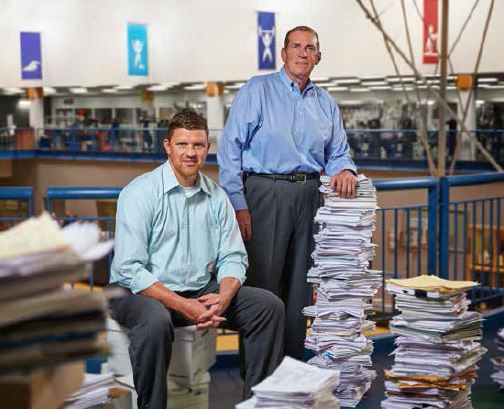
Treatments at Shelbourne Knee Center focus on what works best, based on:
40+ years of research and follow-up with 13,000+ patients.
Research is how see what’s working and what isn’t working. We use what we learn from our patient studies to help you get off the sidelines and back to living, working, and playing the way you want.
Learning What Works Best
Our goal is simple: keep improving treatment for patients with knee injuries and conditions. We do this by:
- Tracking how our patients do (patient outcomes).
- Studying factors related to those outcomes.
Key Research Results
Our patient studies have shown us how to heal knee injuries and conditions faster and more easily, with or without surgery. Key results cover:
- Using physical therapy to prepare patients for surgery.
- Better ways to do surgery for athletic injuries like anterior cruciate ligament (ACL) tears and meniscus tears.
- Accelerating recovery after ACL reconstruction.
- Using physical therapy instead of knee replacement for knee arthritis.
About our Patient Studies
Read about some of our key research results below. Also visit:
Physical Therapy Before Surgery
Doing physical therapy before surgery helps patients with knee injuries, knee arthritis, and other knee conditions recover faster and more easily afterwards. Some patients, especially those with knee arthritis, no longer need surgery after completing pre-op physical therapy.
Range of motion matters
We began using pre-op physical therapy (also called rehabilitation) in 1989, after our research showed that:
- Patients who had surgery within a week of an ACL tear had many more problems with their range of motion afterwards than those who waited at least 21 days and did physical therapy before having surgery.
Range of motion is your ability to straighten (extend) and bend (flex) your knee. Even a small change in your range of motion can affect how well you’ll do after knee surgery. That’s why we focus pre-op physical therapy on improving range of motion first, and then work on strengthening.
Treatment for Athletic Injuries
We’ve learned the best way to treat ACL tears and meniscus tears.
ACL Tears
In treating ACL tears, we’ve learned that:
- Physical therapy before surgery to return the knee to normal except for the ACL tear helps patients do better after surgery.
- The strongest graft to reconstruct the ACL and help patients heal faster is a knee tendon, usually from the non-injured knee.
- Reducing swelling by having patients lay down with the knee about the heart for the first five days after surgery helps patients heal faster.
Here are some of the results for our patients:
- 85-90% return to sport rate, compared to a 50–60% average for most orthopedic practices.
- Return to sport in as little as 3 months after surgery, with an average of about 4-6 months after surgery.
- Lower risk of arthritis in the future than patients in other orthopedic practices.
Meniscus Tears
In treating meniscus tears, we’ve learned that:
- About 80% of meniscus tears will heal with proper physical therapy.
- Poking holes into the meniscus with a needle (trephination) works better than stitching the pieces together for most types of meniscus tears.
- Restoring full range of motion and allowing weight-bearing helps patients recover faster after surgery.
Treatment for Knee Arthritis
Most doctors say that physical therapy won’t relieve symptoms of knee arthritis or improve function. Our research shows that it helps—a lot:
- 76% of our patients didn’t need knee replacement surgery after completing our specialized knee arthritis physical therapy program.
- Most patients had less pain and stiffness within 4-6 weeks of starting physical therapy.
After knee replacement surgery
Patients who have knee replacement surgery at Shelbourne Knee Center recover faster than patients who have the procedure at other orthopedic practices.
At one week after surgery:
- More than 80% of our patients can bend their knees beyond 90 degrees.
- 97% of our patients can fully straighten their knees.
By 3 months after surgery, knee function has improved from an average of:
- 30 to 75 (out of 100).
Even patients who had knee replacement surgery somewhere else and have pain and limited function afterward can benefit from our knee arthritis physical therapy program.
How We Do our Research
K. Donald Shelbourne, MD, and Rodney Benner, MD, work with our physical therapists and athletic trainer to develop and do the research. We also have a research manager, Adam Norris, a research manager/medical writer, Scot Bauman, PT, DPT, PhD, and two research coordinators, Heather Garrison and Diane Davidson.
Patient Surveys and Objective Evaluations
We invite all patients to be part of our research, which includes:
- Surveys that we email to patients each year.
- Objective evaluations (for patients who have surgery):
- X-rays.
- Physical examination.
- Physical testing.
We do the objective evaluations during free follow-up visits:
Regular Review of Patient Studies
Our team reviews research results regularly. We update our treatments based on what we’re learning.
How we Share our Research
We share the results of our studies through international, national and regional presentations and by publishing in medical journals.
See a list of our presentations.
Contact our research staff
Scot Bauman, PT, DPT, PhD
Medical Writer/Research Analyst
(317) 957-9317
Diane Davidson, BS, MBA, CCRC
Research coordinator
(317) 957-9322
Heather Garrison
Research coordinator
(317) 957-9323
